Students explore marine protected area, turn into scientists on World Ocean Day
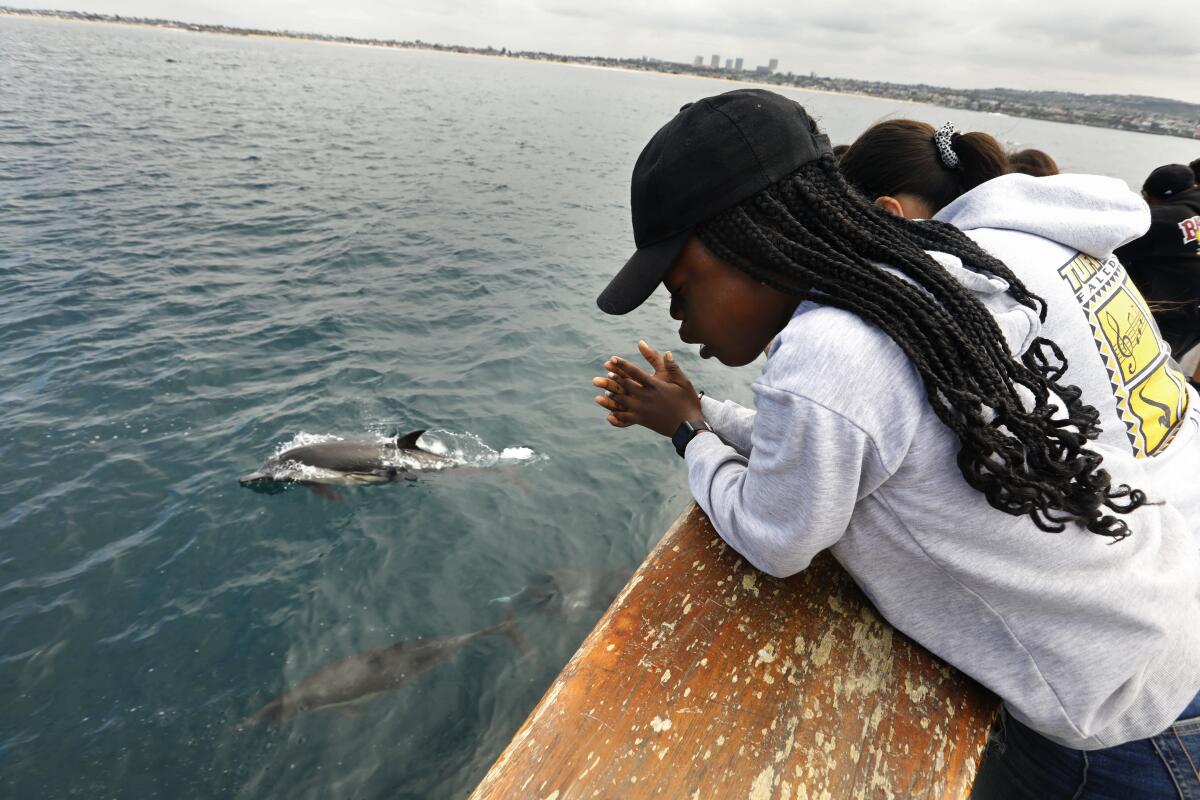
A few dozen middle school students enjoyed a special treat Thursday morning as they embarked on a marine protected area science cruise out of Davey’s Locker in Newport Beach on World Ocean Day.
As the Western Pride left the port, the students were divided into groups for plankton collection, digital fishing and water-quality sampling. Before any of those experiments could get underway, a welcome diversion surrounded the boat.
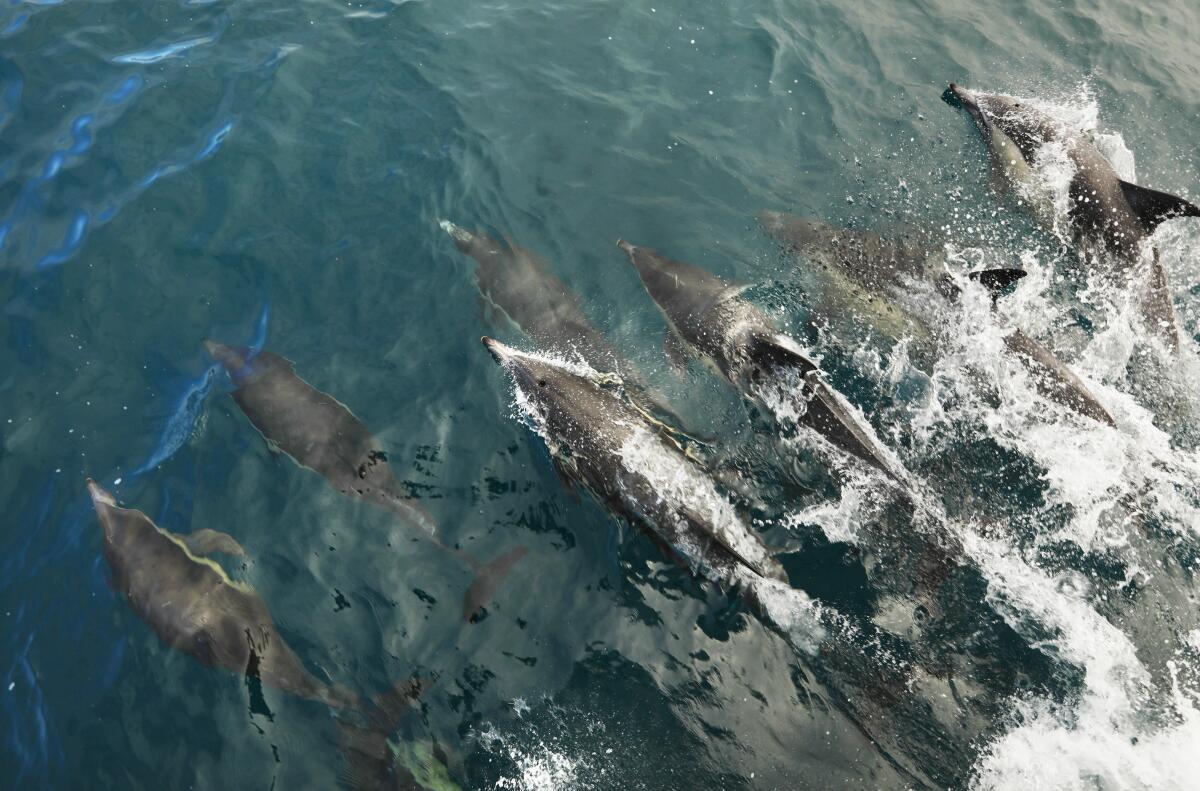
The kids gasped and shouted excitedly as a pod of hundreds of dolphins swam alongside the vessel. Michael Harkins, who was behind the wheel for the cruise, said an estimated 500 dolphins were in the group. Students also learned that dolphins prey on forage fish and that they use echolocation.
“I’ve never seen a dolphin before,” Camila Hernandez, 12, a seventh-grader at Tuffree Middle School in Placentia, said with excitement. “I’ve seen them in movies and all that, but I’ve never seen them in person.”
Eventually, it was time to get back to the scheduled activities. The first group of students cast their plankton nets into the water from the back of the boat. Once they reeled them back in, they went below deck to identify what they had captured with the help of a digital microscope.
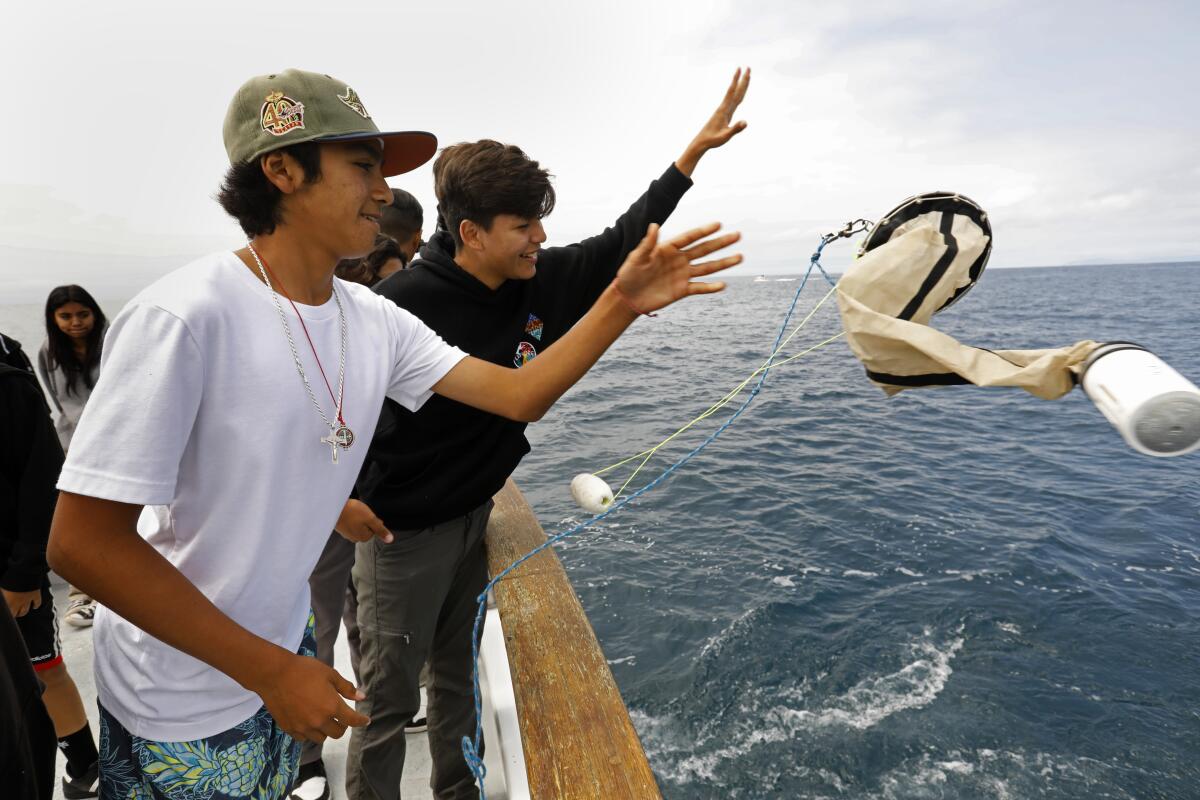
Experts aboard told the students about the two types of plankton — zooplankton (animals) and phytoplankton (plants). Fellow seventh-grader Moyinoluwa Jaiyeola, 13, noted she also learned that plankton cannot swim.
At the water-quality station, students worked with Van Dorn bottles — a device utilized to obtain water at specific depths — checking water temperature, pH level and salinity.
Kaitlin Magliano, education manager at Crystal Cove Conservancy, said the data collected by the students and their knowledgeable supervisors is turned over to researchers at UC Irvine. While the dolphins did serve to divide attention, Magliano saw plenty of upside in the students keying in on marine life. They also saw sea lions on their way back into the harbor.
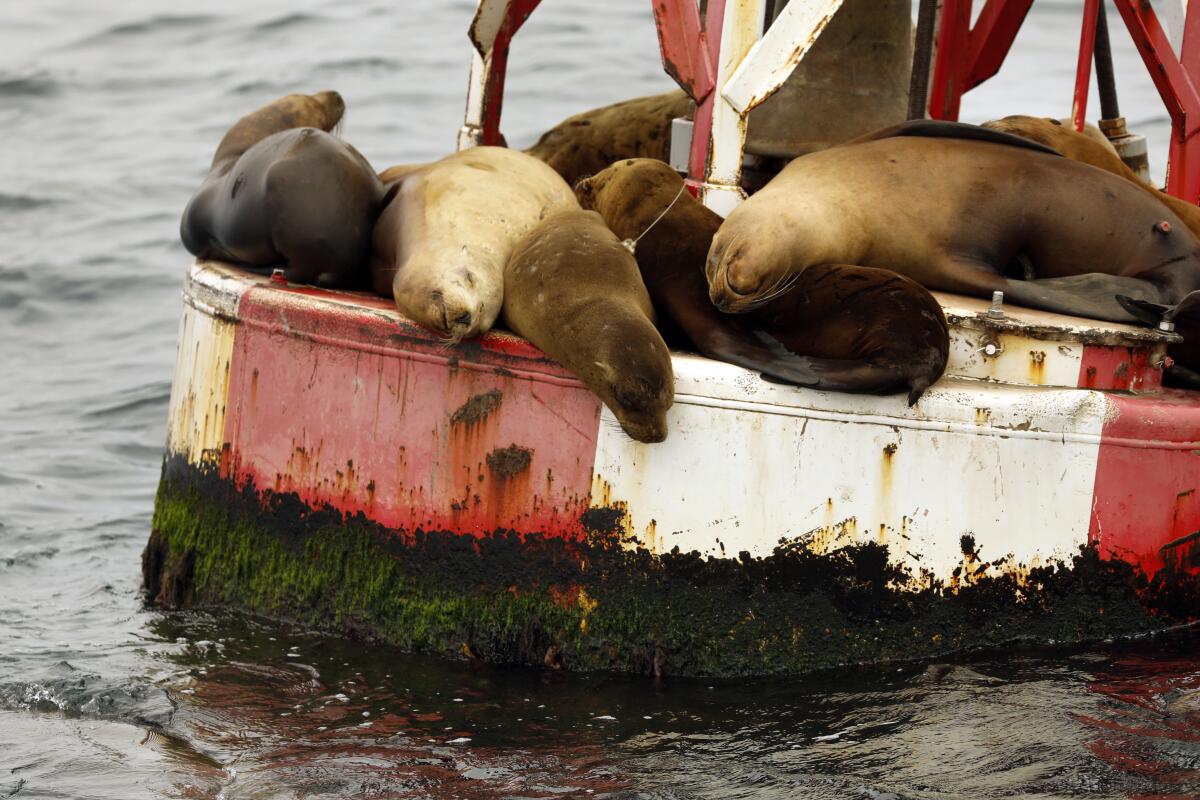
“I just never heard of anything like it, where students were allowed to just be involved in real science research,” Magliano said of working for Crystal Cove Conservancy, where she has been for the past eight years. “I feel like it has been so rewarding to see students just realize that their impact is important and that we value their work and their opinions and see them as scientists, and [seeing] that moment where they realize that this is something they could do.”
The marine protected area exploration program represents a collaboration between Crystal Cove Conservancy and Newport Landing Sportfishing. Kate Wheeler, the president and chief executive of Crystal Cove Conservancy, said the educational tours began in 2012. The program has hosted 50 to 70 tours per year since about the fifth year.
Wheeler emphasized the importance of offering kids multiple opportunities to explore their natural surroundings and participate in science. Crystal Cove Conservancy has furnished a learning ladder that includes restoration ecology and building and coding environmental sensors. Additional opportunities are available through internships for those who want to dive deeper into their scientific pursuits.
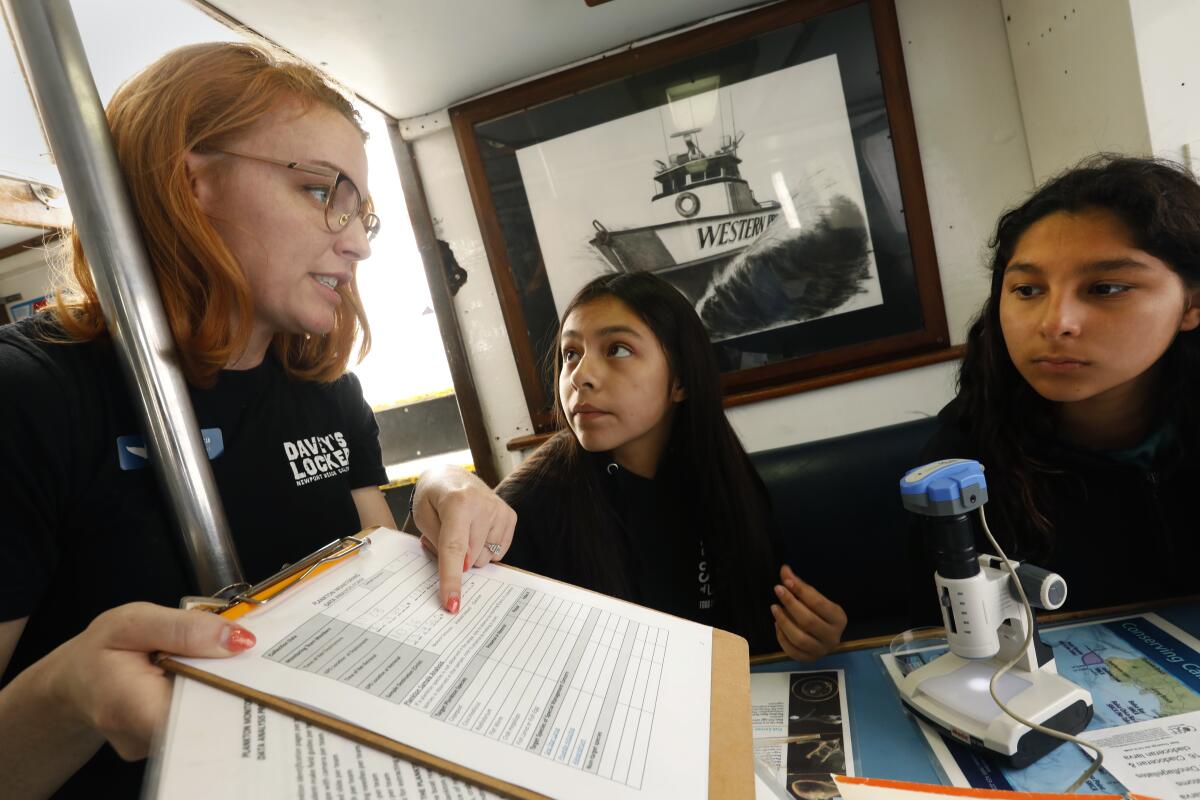
“What we want to do is create that ladder, and then that gives them that on-ramp into the career,” Wheeler said. “A lot of the students, not all of them are going to go into natural resource careers or careers in engineering, but a lot of them will, and those who don’t and maybe step off the ladder sooner, they’re going to be more informed citizens, more literate around environmental issues.”
“The other piece that we think is critically important is getting them out into parks,” Wheeler added. “They need to get out on the ocean and to get into parks. They need to see this happening and have time to see what the natural world is like.”
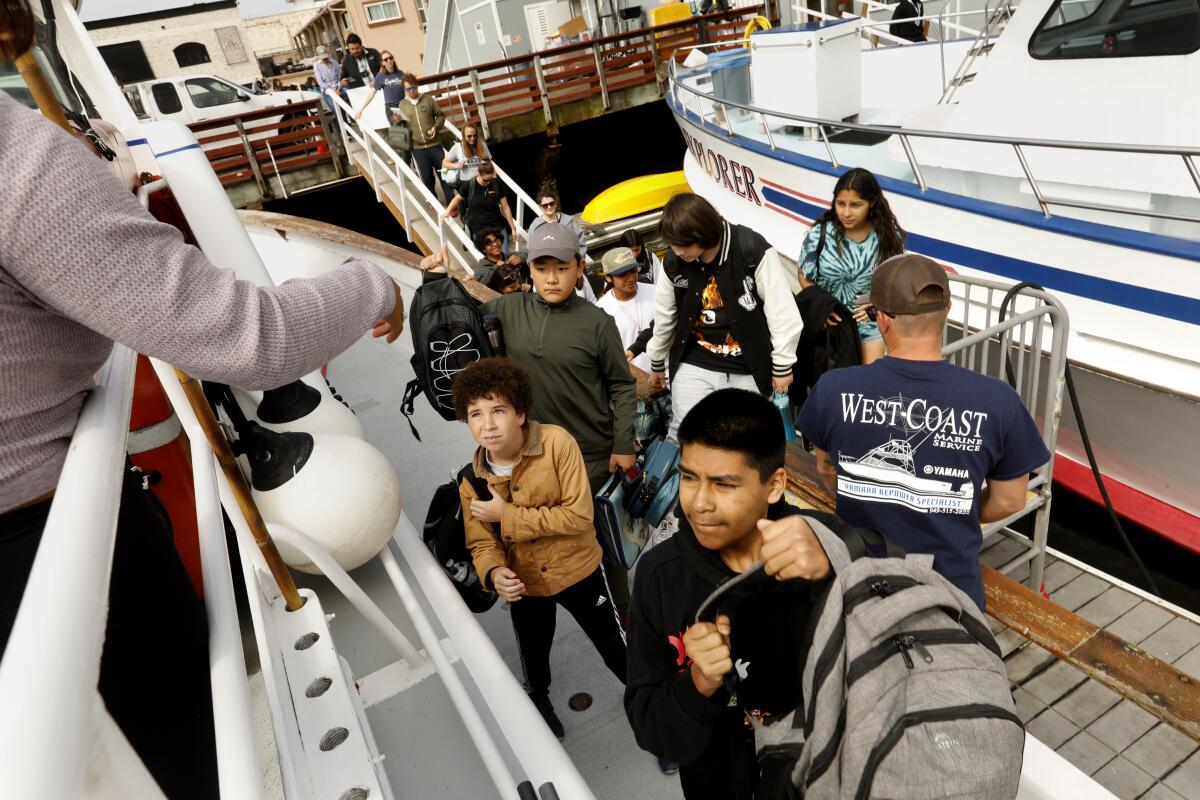
Conservation and sportfishing might seem like a direct contradiction, but Jessica Roame, an education manager at Davey’s Locker and Newport Landing, says the two are becoming more aligned. Ultimately, both interested parties want to see more fish in the ocean, she said.
“We pride ourselves on the fact that we are able to not only continue on with the legacy of the business, which is sportfishing, but we’re able to pivot to doing more education, more whale watching, more ecotourism,” Roame said, noting the formation of the local marine protected area in 2012. “[That is] something that I think … more people are going to be looking for, although I will say sportfishing, in general, is very ecofriendly compared to commercial fishing, going out and catching your own fish hook and line, taking the time to understand how to do that. There’s a lot to be said in the skill and knowledge that a lot of anglers have for the ocean.”
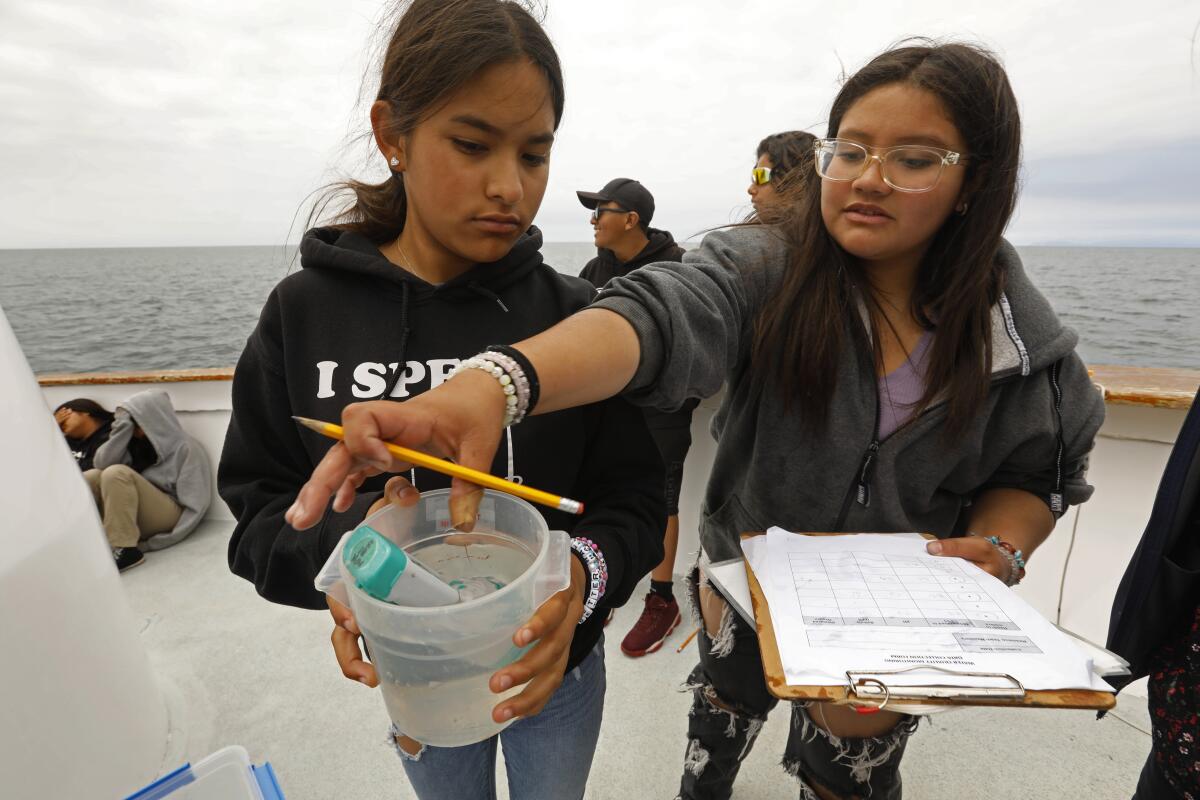
All the latest on Orange County from Orange County.
Get our free TimesOC newsletter.
You may occasionally receive promotional content from the Daily Pilot.




